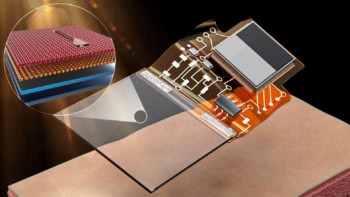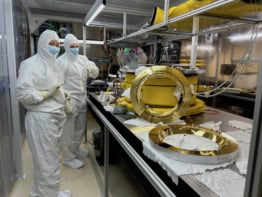Scientists at Bell Laboratories in New Jersey have developed the first semiconductor laser to emit multiple wavelengths of light. Previously only gas or dye laser lasers could emit light with more than one wavelength. The new laser works by using a single, custom-made semiconductor material that produces distinct optical transitions in the mid-infrared spectrum. These features mean the laser could be used for differential spectroscopy and applications such as the analysis of trace gases (Nature 396 350).
Semiconductor lasers are usually monocromatic because the electrons stored in energy bands do not emit any photons unless they move out of the semiconductor’s conduction band. Federico Capasso and colleagues have created the multi-wavlength laser by modifying the conduction band by building 25 different sandwich layers of material into the device. Each sandwich consists of four atomic layers of the semiconductor alloy aluminum indium arsenide, alternated with 18 atomic layers of another alloy, gallium indium arsenide. This creates “sub-energy” bands – discrete electronic states – in the conduction band. These sub-bands form quantum wells in which the electrons fall. The electrons do not have enough energy to escape the quantum well, but can move through quantum tunelling into lower energy bands. As they cascade down through the energy bands, they emit photons as they go. By precisely tailoring the layers’ thickness, the electrons have energy levels designed to emit light at several pre-selected wavelengths
The maximum power output of the new system has so far been 1 Watt, which occurs when it is cooled to 10 Kevlin. The device only emits two wavelenths if operated above 250K, and optical powers of no more than a few hundred milliwatts are available at room temperature.



